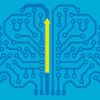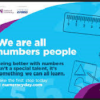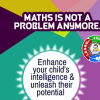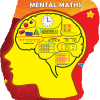- Empty cart.
- Continue Shopping
Investing in Mental Math
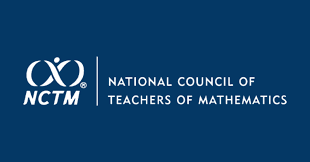
Mental Math Concepts
Understanding what numbers mean and what operations mean is the foundation for learning increasingly complex mathematics. Younger students should be able to recognize the number of objects represented in familiar patterns such as the five dots on the side of a die or eight objects arranged in two rows of four. For two- or even three-digit numbers, they might associate a numeral with a base-ten model that shows ones, tens, and hundreds. Students need mental pictures of a range of numbers like 10, 88, or 125. Carrying such mental pictures of the size and value of numbers prepares students for learning addition and multiplication facts and for solving simple problems involving computation. As students develop the mental ability to see numbers as being made up of other numbers (for example, seeing 125 as 100 + 20 + 5), their understanding of the number system expands.
Mental Computation
Ideally, students should have ready mental recall of their single- digit addition and multiplication facts. Ready knowledge of such facts for solving problems is an important component of mathematical knowledge. Beyond facts, I also believe that students should know how to multiply numbers mentally by 10, 100, or 1,000. Additionally, students should be able to come up with combinations that add up to 10 or 100. Students should know the pairs of whole numbers that add up to 10, realizing that, for instance, both 6 + 4 and 4 + 6 represent the same thing. When presented with a number like 37, students should be able to think of 63 as its “hundred partner.” There are many other quick tips and mental shortcuts that can help students perform calculations mentally or that can aid them as they perform paper-and-pencil calculations.
Investing in Mental Math
Mental math proficiency represents one important dimension of mathematical knowledge. Not all individuals will develop rapid mental number skills to the same degree. Some will find their strength in mathematics through other avenues, such as visual or graphic representations or creativity in solving problems. But mental math has a clear place in school mathematics. It is an area where many parents and families feel comfortable offering support and assistance to their children.
Mental math need not depend on rote memorization. In fact, the development of mental models for numbers and operations is greatly facilitated by students engaging in purposeful experiences with concrete objects and number patterns. Teachers play a vital role in making sure that these experiences are connected in meaningful ways to the mathematics we ask students to learn.
In my observation, mental math does not receive the attention it deserves. Perhaps this is because the development of mental techniques is not always explicitly stated as an objective or state-level standard. Whatever the reason, the time has come to invest in helping students build the mental math skills in their tool kits as part of their comprehensive mathematical understanding. The payoff for this investment can be tremendous both in improving students’ mathematical abilities and in giving a visible sign that we are committed to preparing students with the kind of mathematical proficiency that the public can readily appreciate.


